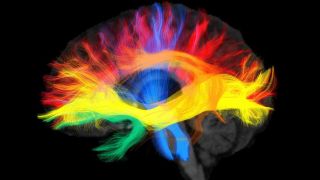Abstract
This study documents an unusual case of developmental synaesthesia, in which speech sounds induce an involuntary sensation of taste that is subjectively located in the mouth. JIW shows a highly structured, non-random relationship between particular combinations of phonemes (rather than graphemes) and the resultant taste, and this is influenced by a number of fine-grained phonemic properties (e.g. allophony, phoneme ordering). The synaesthesia is not found for environmental sounds. The synaesthesia, in its current form, is likely to have originated during vocabulary acquisition, since it is guided by learned linguistic and conceptual knowledge. The phonemes that trigger a given taste tend to also appear in the name of the corresponding foodstuff (e.g. /I/, /n/ and /s/ can trigger a taste of mince /mIns/) and there is often a semantic association between the triggering word and taste (e.g. the word blue tastes “inky”). The results suggest that synaesthesia does not simply reflect innate connections from one perceptual system to another, but that it can be mediated and/or influenced by a symbolic/conceptual level of representation.
Similar articles
-
A comparison of lexical-gustatory and grapheme-colour synaesthesia.
Cogn Neuropsychol. 2005 Feb;22(1):28-41. doi: 10.1080/02643290442000022.PMID: 21038239 -
Tasty non-words and neighbours: the cognitive roots of lexical-gustatory synaesthesia.
Cognition. 2009 Feb;110(2):171-81. doi: 10.1016/j.cognition.2008.11.008. Epub 2008 Dec 20.PMID: 19101668 -
The neural basis of illusory gustatory sensations: two rare cases of lexical-gustatory synaesthesia.
J Neuropsychol. 2011 Sep;5(2):243-54. doi: 10.1111/j.1748-6653.2011.02013.x.PMID: 21923788 -
Beyond perception: synaesthesia as a psycholinguistic phenomenon.
Trends Cogn Sci. 2007 Jan;11(1):23-9. doi: 10.1016/j.tics.2006.10.010. Epub 2006 Nov 29.PMID: 17137829 Review. -
Anomalous perception in synaesthesia: a cognitive neuroscience perspective.
Nat Rev Neurosci. 2002 Jan;3(1):43-52. doi: 10.1038/nrn702.PMID: 11823804 Review.
Source: Lexical-gustatory Synaesthesia: Linguistic and Conceptual Factors – PubMed













